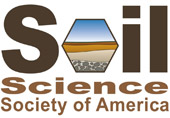Pedogenesis of Ant-Colonized Soils at Doolittle Prairie State Preserve, Iowa.
Poster Number 12
See more from this Division: PosterSee more from this Session: Biodiversity and Ecological Sustainability
Institution: Iowa State University
Major Professor/ Co-Author: C. Lee Burras
Presentation Type: Poster
Title:Pedogenesis in ant colonized soils in Doolittle Prairie State Preserve, Iowa
The breadth, diversity, and population density of ants are tremendous. Because of this, and because they are such dominant ecosystem engineers, ants greatly alter their surrounding environments. The purpose of this study is to quantify the impact of ant activities on soil morphology and genesis in an undisturbed Iowa prairie. Our running hypotheses include: Ho- Pedological properties on and off mounds are identical. Ha1- Pedological properties vary on and off mounds, and properties within mounds are isotropic. Ha2- Isotropy extends beyond the mound radius. Sampling occurred at Doolittle Prairie State Preserve in central Iowa. Eleven ant mounds were sampled. Soil cores (to a depth of up to 150 cm) were taken along transects to include mounds and adjacent soils. Morphological characteristics were noted with soil descriptions. Subsamples were analyzed for pH, stable aggregate content, total nitrogen, total organic carbon, and calcite/dolomite composition. Results showed soil profiles within ant mounds had significantly deeper A horizons and thinner B horizons than adjacent soils. Variability was observed throughout the profile regarding color, coarse fragment distribution, carbonates, stable aggregates, and pH. This demonstrates that soils associated with ant activity are very different from adjacent soils, both chemically and physically. We interpret that the duration of ant colonization within a volume of soil may be predicted by considering the extent of soil mixing in that profile.
See more from this Session: Biodiversity and Ecological Sustainability
